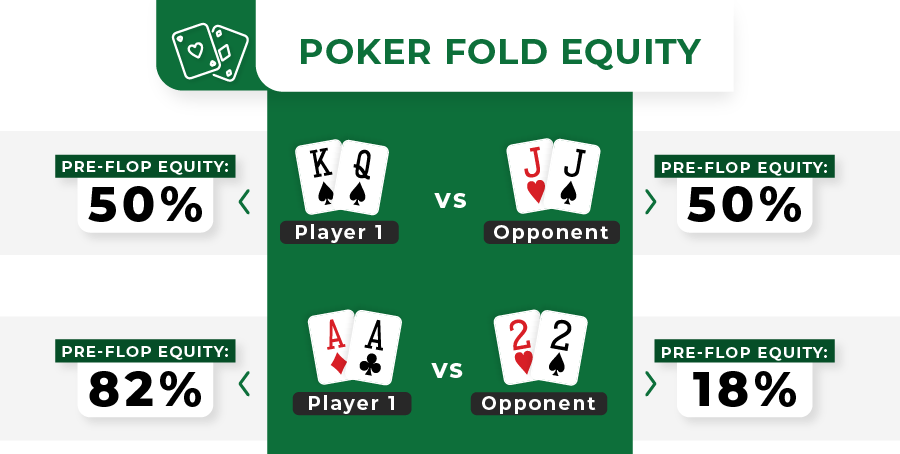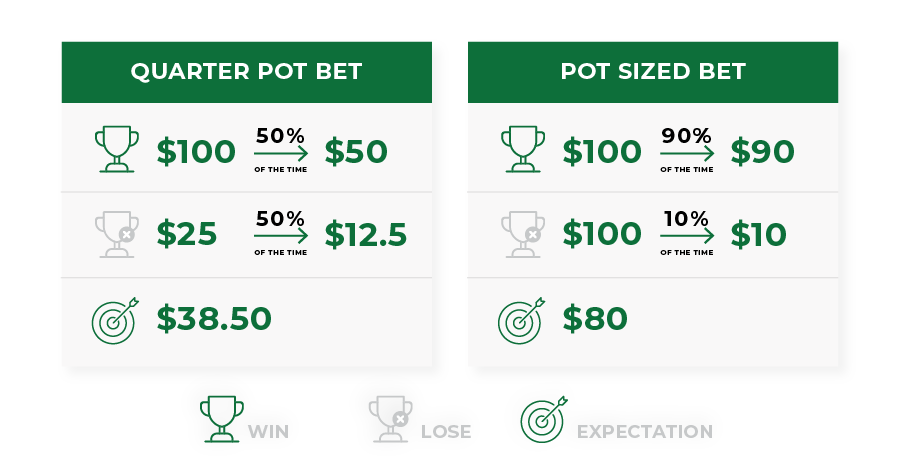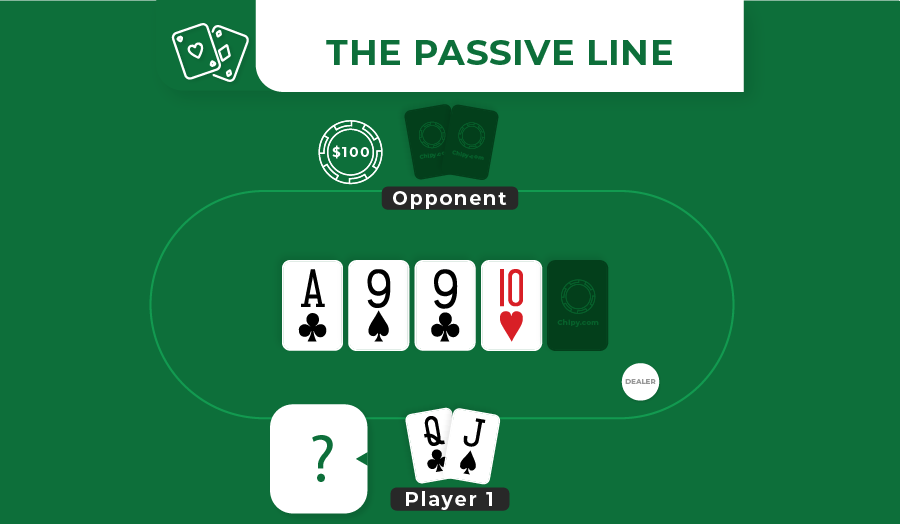Looking to delve deep into the concept of fold equity in poker? You're in the right spot!
Ashley Adams, a poker teacher and pro player who's spent many hours at poker tables throughout the United States and worldwide is excited to share his knowledge and help you start your professional poker journey.
This guide will walk you through the essence of fold equity in poker.
You'll embark on the journey with foundational knowledge, such as understanding the term itself and its importance, then progress to more nuanced tactics like leveraging fold equity in various scenarios.
Here's what you'll uncover:
By the time you conclude this guide, you'll be equipped with a sharper understanding of fold equity, boosting your gameplay and decision-making abilities.
Let's get started!
Author’s note
I have already written a guide on folding and how one makes money at the poker table by strategically folding.
A related concept is one involving the benefit of having an opponent fold. Bets and raises can get opponents to fold in ways that can benefit us.
This concept is known generally as “fold equity”. This guide addresses that directly and briefly.
Fold equity is important when deciding what line to take against an opponent.
It is a relatively simple concept that has, in my view, been over-analyzed – turned into a mathematical formula that has been off-putting to many regular Joes and Janes in the poker world.
But understood correctly, it can significantly increase our ability to win money.
Let me explain it in a way that everyone can understand and use.
Equity is the percentage of the pot that we expect to win in the long run based on our hand and our opponent’s hand.
KQ suited against JJ pre-flop? We have roughly 50% equity.
Flush draw on the turn? Our equity is approximately 18%.

Flush draw on the turn, approximately 36% equity. AA vs. 22 pre-flop. The Aces have roughly 82% equity, the 22 approximately 18%.
Definition
Fold equity is the percentage of the time you win a pot because your opponent folds. This is dependent on your betting action.
Here’s an example of that:
Your opponent bets. You think about raising. What percentage of the time do you think your opponent will fold if you raise? That percentage is their fold equity.
This is obviously a subjective number, unlike drawing odds or pot odds.
There’s no way to figure it precisely or completely accurately. That’s because you can never be sure of what an opponent will do in any situation.
Nevertheless, as you can imagine, and as I’ll show, it is a very important number.
How often do you think they will fold? Your best estimate is your fold equity in the pot.
Conversion Chart (Feelings to Percentages)
Here are some ways of estimating – turning your “feeling” into a number.
| Feelings | Percentage |
| Absolutely, completely, and utterly certain that your opponent will do something | 100% |
| Almost completely sure. Sure beyond a shadow of a doubt (but not 100% certain) | 90% |
| Pretty darn sure. | 75% |
| A little more sure than not. | 60% |
| Completely unsure. Could go either way. A coin flip. | 50% |
And then invert the percentages based on how sure you are that something will go the other way.
Here’s a very specific example.
You are against a very tight player who has position on you. You have been check calling with Qh Js.
The board is Ks Th 6s 5c 2s. You missed.

But, thanks to the river, the board now has three spades. And it seems logical that you might have been playing a flush draw and just hit it.
With a pot of $100, on the river, what are the chances that your opponent will fold if you make a pot-sized bet?
Pick a number. That’s your fold equity.
Consider how often you think your opponent will fold to a bet. That’s your best guess or judgment.
It’s not precise, but give it a shot. Look at the conversion chart above.
Let’s say that you estimate that your opponent is as likely as not to fold. A coin flip. That would give you 50% fold equity.
Would the $100 river bet into a $100 pot be worth making?
You’d win the pot of $100 50% of the time when he folded to your $100 bet; and you’d lose $100 50% of the time when he called.
Your bet, over time, would lose as much as it won. You’d have an expectation of a net $0 for your bet.
Another Example with 90% Fold Equity
You’d have to win more than 50% of the time for your bet to show a profit.
So let’s change the equation to reflect that.
Let’s say you estimated that your tight opponent would fold to your bet almost all the time. Look at the conversion chart.
Almost all the time is … give it a number. Let’s say 90% of the time he would fold. That would be 90% fold equity.
If that were the case, you’d lose $100 10% of the time when he called and you lost -- $10 over time.
And you’d win $100 90% of the time when he folded and you won the $100 in the pot. That’s $90 over time.
That would give your pot-sized bet on the river an $80 positive expectation.
Put simply, you’d make a lot of money on your bet – so you should make it.
You could then speculate about the size of your bet, and how much it might affect your opponent’s willingness to fold.
Could you achieve the same 90% fold-rate if you only bet $50, instead of $100? That would be an even better bet – if your assumptions were correct.
You’d win $100 90% of the time – for $90, but you’d lose $50 10% of the time, for just $5. $90 minus $5 = $85 positive expectation.
But what if you estimated that a smaller bet might diminish the chances that your opponent would fold.
In terms of fold equity, what if you thought that a smaller bet would give you less fold equity?
Let’s say you figured that a quarter sized bet would have a 50% chance of being successful? Would your expectations be better or worse than a $100 bet with 90% chance of getting your opponent to fold?
Plug in the numbers:
- You win $100 50% of the time for $50
- You lose $25 50% of the time for $12.50
- You have an expectation of winning 38.50.
As opposed to:
- You win $100 90% of the time for $90
- You lose $100 10% of the time for $10
- You have an expectation of winning $80.

Clearly, the bigger bet of $100, with 90% fold equity, is the better of the options in this case.
Get it?
There are excellent fold equity calculators to help you do the equations quickly. You just plug in the different numbers and it spits out the results.
These are the types of poker homework assignment that serious players do away from the table.
They compare and consider all sorts of possibilities.
The next time they are faced with difficult decisions at the table, they have this thinking to rely on in making their choices.
But this is just the beginning of the fold equity party you will be having.
This was the most simple case of a bet on the river, with no cards to come. Things get much more interesting with fold equity considerations on the flop and turn.
Fold equity is especially useful when trying to decide between two different lines of attack – a passive line and an active line before the river. Let me give you a couple of examples of those, so you’ll see how an understanding of fold equity can really ramp up your game.
Here’s a classic example:
The Passive Line
It’s the turn. You have the Qc Js. The pot is $100.
You’ve been calling a player in early position. He bet pre-flop and he continued on the flop of Ac 9s 9c.
The turn is the Tc. He checks.

You don’t have a made hand, though you have terrific draws. You have a choice.
You could check behind him and see what the river brings. Or, you could bet – making a semi-bluff, with two ways to win.
You might make your hand on the river by hitting any club for the second nut flush. Or you might hit a King for Broadway and the nut straight.
You also might hit an 8 for a Queen-high straight. (And there’s a one-outer to a straight flush) . 9 club outs for the presumed winning flush.
Plus 6 more outs for the winning straight (2 straight outs have already been counted with the flush outs).
That’s a combo draw of 15 outs, giving you roughly 30% equity in the hand by checking.
In the long run, if you assume that you’ll win just the pot of $100, that gives you 30% equity – which, with a $100 pot translates to exactly $30 equity in this pot.
But let’s look at a possible aggressive line and see how we might do. Is it possible to get more than 30% equity in the pot?
What if you don’t check behind your opponent after his check on the turn? What if, instead of checking, you bet the turn after he checks? Might you increase that $30 to a higher figure?
Before we can figure that out, we need to estimate how frequently your opponent will fold to your bet.
So think about that. Think of the amount you bet and the chances that he will fold.
Start with the extreme and work your way down. Is your opponent so tight that he’ll fold to nearly any large bet?
If you bet the pot, for example, will he almost surely fold? If so, will that large bet be profitable?
Let’s do the math (and there are calculators you can use to make this much simpler.) But for now, to help make sure you understand, we’re going to do it manually so you can see how these calculations work.
Using the 90% figure, by definition you’ll win by getting your opponent to fold 90% of the time you make a $100 bet.
That means 90% of the time you’ll win $100. 10% of the time you’ll lose $100. That’s $90 - $10 = $80. That $100 bet has an $80 expected return.
But wait! That’s not accurate, is it?
While the first part of the equation is correct. You will win $100 90% of the time for $90. You will not always lose when you’re called.
This is still the turn with one more card to come. And with one more card to come you might be called and still draw a winning hand!
In fact, on average, you’ll win 30% of the time when your flush or straight draw comes in. And you’ll win not 30% of $100, but 30% of $200 (the pot and your opponent’s call). 30% of the 10% of the time you’re called is 3%. 3% of $200 is $6.
So you’ll only lose $4 in the long run, as you’ll win 30% of that $20 (10% of $200), when your 15 outs come in.
That’s winning $90 when your bluff works and losing just $4 when your bluff fails, for a net gain of $86.
That’s a whole lot better than losing $70 by just taking the free draw!
One More Example of Aggressive Line and Fold Equity
Even so, you might think that few opponents are so tight that they’ll fold 90% of the time to a pot-sized bet.
Okay. Fair enough.
Maybe your opponent will only fold 50% to a $100 bet. Do the math with that estimate (and, again, there are calculators that do this work for you).
Fifty percent of the time you’ll win $100 on your semi-bluff. Fifty percent of the time your opponent will call you.
And of those times, they’ll win 70% of the $100 when your draw doesn’t come in. And you’ll win 30% of $200 (pot and their call of your bet) when your draw does come in. That creates a positive expectation for your $100 bet on the turn of $40.
- 50 % of the time, villain will fold, winning you 50% of $100 for +$50
- 50% of the time, villain will call
- 70% of that 50% of the time, you’ll lose $100: losing you - $35
- 30% of that 50% of the time, you’ll win $200: earning you + $30
- Total Expectation for that $100 bet on the turn + $45
As you can see, sometimes the best line of attack lies in aggression. Fold equity can be part of that consideration.
Final Thoughts
Poker fold equity is a concept that has you estimate how frequently your opponent will fold to your betting action.
As such, it is imprecise and based on your subjective judgment.
Even so, as you can see, it is a very good tool to see how your bet or raise gives you more equity in the pot than just your drawing odds.
As such, it is a most useful tool for helping you inject more aggression into your game.
Good luck and make sure you continue learning about poker in the Academy!

Bonuses
Casinos
Games
Academy
News
Shop
NEW Q&A
Sweepstakes























